Ovadia ben Jacob Sforno was an Italian rabbi, Biblical commentator, philosopher and physician. A member of the Sforno family, he was born in Cesena about 1475 and died in Bologna in 1549.

Hasdai ibn Shaprut born about 915 at Jaén, Spain; died about 970 at Córdoba, Andalusia, was a Jewish scholar, physician, diplomat, and patron of science.
World Agudath Israel, usually known as the Aguda, was established in the early twentieth century as the political arm of Ashkenazi Torah Judaism. It succeeded Agudas Shlumei Emunei Yisroel in 1912. Its base of support was located in Eastern Europe before the Second World War but, due to the revival of the Hasidic movement, it included Orthodox Jews throughout Europe. Prior to World War II and the Holocaust, Agudath Israel operated a number of Jewish educational institutions throughout Europe. After the war, it has continued to operate such institutions in the United States as Agudath Israel of America, and in Israel. Agudath Israel is guided by its Moetzes Gedolei HaTorah in Israel and the USA.
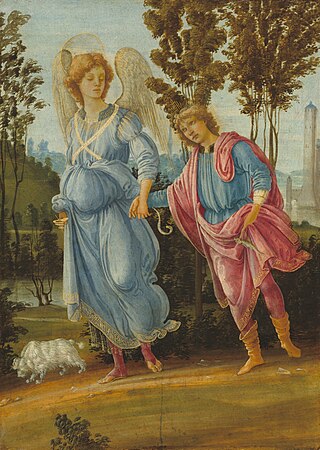
Tobias is the transliteration of the Koinē Greek: Τωβίας which is a translation of the Hebrew biblical name טוֹבִיה, Toviyah, 'Yah is good'. With the biblical Book of Tobit being present in the Deuterocanonical books and Biblical apocrypha, Tobias is a popular male given name for both Christians and Jews in English-speaking countries, German-speaking countries, the Low Countries, and Scandinavian countries. In English-speaking countries, it is often shortened to Toby. In German, this name appears as Tobias or Tobi; in French as Tobie; and in Swedish as Tobias or Tobbe. Tobias has also been a surname.
Rabbi Chaim Kreiswirth (1918–2001) was an Orthodox rabbi who served as the longtime Chief Rabbi of Congregation Machzikei Hadass Antwerp, Belgium. He was the founder and rosh yeshiva of the Mercaz HaTorah yeshiva in Jerusalem, and was a highly regarded Torah scholar.

The history of the Jews in Europe spans a period of over two thousand years. Jews, an Israelite tribe from Judea in the Levant, began migrating to Europe just before the rise of the Roman Empire. Although Alexandrian Jews had already migrated to Rome, a notable early event in the history of the Jews in the Roman Empire was the 63 BCE siege of Jerusalem.
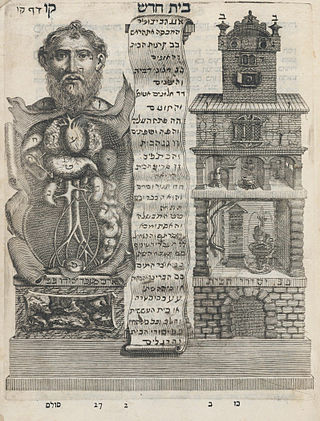
Ma'aseh Toviyyah or Ma'aseh Tobiyyah was an encyclopedic scientific reference book written by Tobias Cohn. It was published in Venice, Italy, in 1707, and reprinted there in 1715, 1728, 1769, and 1850.

Narol ) is a town in Subcarpathian Voivodeship, in Lubaczów County, Poland. It had a population of 2,109 as of 2009. Narol is situated in the northeast of Podkarpackie region, in an area called Narolszczyzna. The town of Narol regained the rank of 'city' in 1996.
Nathan Nata ben Moses Hannover was a Ruthenian Jewish historian, Talmudist, and kabbalist.
Rabbi Zadok ha-Kohen Rabinowitz of Lublin, or Tzadok Hakohen or Tzadok of Lublin, was a significant Jewish thinker and Hasidic leader.
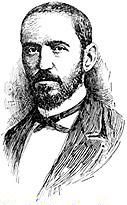
Isidore Loeb was a French scholar born at Soultzmatt, Haut-Rhin. The son of Rabbi Seligmann Loeb of Sulzmatt, he was educated in Bible and Talmud by his father. After having followed the usual course in the public school of his native town, Loeb studied at the college of Rouffach and at the lycée of Colmar, in which city he at the same time attended classes in Hebrew and Talmud at the preparatory rabbinical school founded by Chief Rabbi Solomon Klein. In 1856 he entered the Central Rabbinical School at Metz, where he soon ranked high through his knowledge of Hebrew, his literary ability, and his proficiency in mathematics. In 1862 he was graduated, and received his rabbinical diploma from the Séminaire Israélite de France at Paris, which had replaced (1859) the Metz École Centrale Rabbinique.
Shem-Ṭob ben Isaac of Tortosa was a Provençal rabbi and physician.

Isaac Lampronti was an Italian rabbi and physician, best known as author of the rabbinic encyclopedia Paħad Yitzħak.
Cohen, also spelled Cohn, Kohn, or Kahn, is a surname of Jewish, Samaritan and Biblical origins. It is a very common Jewish surname, and the following information discusses only that origin. Cohen is one of the four Samaritan last names that exist in the modern day. Many Jewish immigrants entering the United States or United Kingdom changed their name from Cohen to Cowan, as Cowan was a Scottish name. The name "Cohen" is also used as a given name.

Tuvia Bielski was a Belarusian Jewish militant who was leader of the Bielski group, a group of Jewish partisans who set up refugee camps for Jews fleeing the Holocaust during World War II. Their camp was situated in the Naliboki forest, which was part of Poland between World War I and World War II, and which is now in western Belarus.

Abraham Cohen was a Jewish physician, rabbi, religious philosopher and poet on Zante (Zakynthos), an Ionian Island, and an overseas colony of the Venetian Republic.
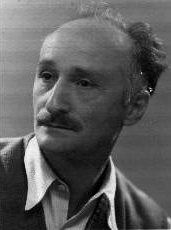
Alexander Bogen was a Polish-Israeli visual artist, a decorated leader of partisans during World War II, a key player in 20th century Yiddish culture, and one of the trailblazers for art education and Artists' associations in the emerging state of Israel.
Jacques Calmanson, born Solomon Jacob ben Kalman, was a Polish Jewish maskilic writer, translator, and personal physician of King Stanislaw II.
Lazar Raschkow was a German Jewish physician, writer, and poet.
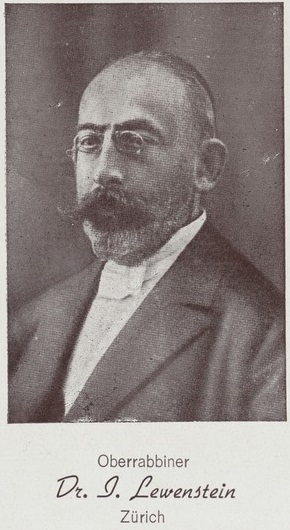
Tobias Tuvia Lewenstein was Chief Rabbi of Jewish communities in the Netherlands, Denmark, and Switzerland in the late 19th and early 20th centuries.












